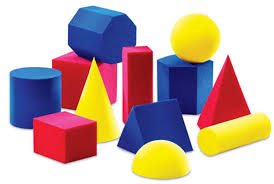
Finding the Volume of Cylinders, Pyramids, Cones, and Spheres Solving Routine and Non-routine Problems Involving Volumes of Solids
In Geometry, 3D shapes are referred to as three-dimensional shapes or solids. These occupy space and have 3 dimensions. Usually, 3D shapes are obtained from the rotation of the 2D shapes. The faces of the solid shapes are 2D shapes only. Some examples of 3D shapes are a cube, cuboid, cone, cylinder, sphere, prism, and so on. The amount of any substance that these shapes can hold is called its volume.
Volume of a 3-d shape is defined as the total space enclosed/occupied by any 3-dimensional object or solid shape. It also can be defined as the number of unit cubes that can be fit into the shape. The SI unit of volume is cubic meters. Other units are fluid ounce, gallon, quart, pint, tsp, fluid dram, cubic yards, barrel, etc.
The volume of different 3D shapes can be calculated using different formulas for each shape.

QUARTER 4 : WEEK 1
A handy guide all about volume and how it relates to shapes. You will learn how to calculate volume, what it is measured in, and how children learn about it!
Students consider how much space different objects take up. Great care is taken to ensure that they think three-dimensionally about volume. They soon recognize the limitation of sight for comparing volumes. Students are introduced to cubic centimeters as a standard unit of measure so that they are able to measure and compare volumes. In culmination, they measure the volume of same-sized cubes and order them on a volume line. The cubes all end up in the same place on the line providing explicit evidence that objects can have the same volume, but very different weights. This again creates awareness that some objects are heavy for size—a precursor to density.
Students will recognize volume as an attribute of solid figures and calculate the volume of simple rectangular prisms by counting cubic units.